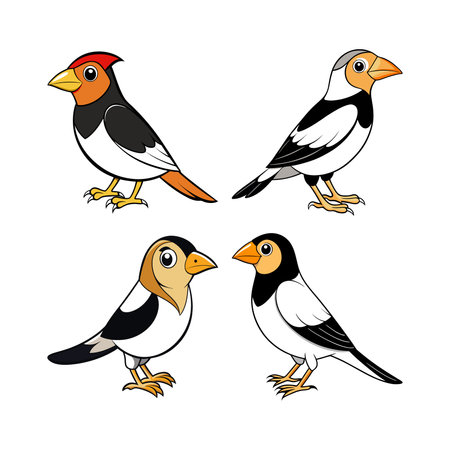Introduction to the Rich Tradition of British Rambling
There is a timeless magic woven into the tapestry of the British countryside—a gentle invitation to wander, to breathe in hedgerow scents, and to let one’s thoughts meander alongside rippling streams and ancient stone walls. For generations, rambling has been more than just a pastime in the United Kingdom; it is a cherished cultural tradition deeply rooted in the nation’s history. From windswept moors to sun-dappled woodlands, walking enthusiasts have long gathered to celebrate the land’s quiet beauty, weaving stories and friendships as they go. The British rambling clubs, born from a shared love for open spaces and communal exploration, have nurtured this spirit, fostering a sense of belonging and adventure that endures through every season. These clubs are not only custodians of footpaths and local lore but also stewards of annual events and festivals—vivid celebrations that bring walkers together to honour the landscapes they love. Through their eyes, we glimpse rolling fields dotted with wildflowers, hear the laughter carried on country breezes, and feel the pulse of rural life that beats at the heart of every ramble. In delving into these gatherings, we discover not just organised walks but vibrant traditions—a living connection between people and place that is uniquely British.
Seasonal Walks and Themed Hiking Events
British rambling clubs have a unique way of weaving the country’s ever-changing seasons into their annual calendar, crafting walks that reflect the spirit of each time of year. Every spring, clubs across the nation organise blossom rambles—gentle strolls through hedgerows bursting with hawthorn and cherry, and meadows dotted with bluebells. As summer unfolds, walkers are drawn to coastal paths where sea thrift dances in the breeze and golden evenings stretch over heather-clad hills. Autumn brings a different kind of magic: woodland walks carpeted with fallen leaves, amber sunlight filtering through ancient oaks, and the earthy scent of fungi underfoot. In winter, bracing hikes across frost-tipped moors or festive lantern-lit routes keep spirits high even on short days.
To celebrate these seasonal highlights, many clubs tailor their events to embrace the shifting landscape and local traditions. For example, a spring walk might coincide with village May Day festivities, while autumn hikes could end at cosy pubs serving mulled cider by the fire. Themed walks—such as birdwatching in early summer or foraging expeditions in autumn—add layers of discovery and connect members to the natural world in deeply personal ways.
| Season | Typical Event | Distinctive Features |
|---|---|---|
| Spring | Blossom Rambles | Bluebells, wild garlic, lambs in fields |
| Summer | Coastal Hikes & Evening Walks | Sea views, wildflowers, long daylight hours |
| Autumn | Woodland Walks & Foraging Tours | Falling leaves, fungi spotting, harvest celebrations |
| Winter | Festive Strolls & Frosty Moorland Hikes | Crisp air, lantern-lit routes, pub stops for warmth |
This rhythmic approach to walking ensures no two outings are ever quite the same; each season paints familiar footpaths with new colours and stories. Through these carefully curated events, British rambling clubs foster not just a love of walking but a deep connection to the living tapestry of the countryside itself.

Heritage Trails and Local Festivities
There is a special kind of magic in the British countryside when rambling clubs set out on heritage trails. Each step along these ancient paths is steeped in the stories of generations gone by, where hedgerows whisper secrets and old stone bridges bear silent witness to the passage of time. These annual walks are not merely about traversing miles; they are immersive journeys into local history, folklore, and enduring traditions that have shaped rural communities for centuries.
Honouring Age-Old Traditions
Many rambling clubs carefully craft routes that coincide with village fetes, harvest festivals, or significant historic anniversaries. It is not uncommon to find yourself ambling through wildflower meadows towards the heart of a bustling village green, just as bunting is unfurled and Morris dancers begin their rhythmic steps. The rambles become living threads woven into the fabric of community celebrations—sometimes culminating at a centuries-old church for a harvest blessing, or pausing beside ancient standing stones to hear tales spun by local storytellers.
Folklore and Storytelling Along the Way
As walkers pause beside ruined abbeys or beneath towering oak trees, club leaders often share legends unique to each locale—a dragon said to sleep beneath a hillock, a ghostly piper heard on misty moors, or the origins of peculiar customs like well-dressing or cheese rolling. These narratives bring colour and depth to each footstep, transforming a simple walk into an evocative journey through time.
Connecting Past and Present
The beauty of these heritage rambles lies in their ability to bridge past and present. Whether joining villagers in a maypole dance or sampling homemade jams at a country fair, ramblers become part of the ongoing story of the land. In this way, every annual event hosted by British rambling clubs becomes more than just an exploration of landscapes—it is an act of remembrance and celebration, binding walkers together with those who have wandered these lanes before.
4. Charity Challenges and Community Gatherings
British rambling clubs are not merely about wandering through wildflower meadows or tracing ancient bridleways—they are also powerful engines for community spirit and charitable endeavour. Each year, these groups orchestrate a tapestry of fundraising treks and sponsored walks that wind through the countryside, all for a good cause. Whether supporting local hospices, national health charities, or environmental projects, these challenges transform gentle rambles into purposeful journeys.
Sponsorship Walks: Walking with Purpose
The heart of many annual events lies in the classic sponsored walk. Participants gather pledges from friends and family, promising to cover a set distance—often mapped out along scenic routes that showcase the beauty of Britain’s hills and hedgerows. These walks may be brisk and challenging or slow-paced and social, but always imbued with a sense of camaraderie and shared mission.
| Event Type | Charity Focus | Common Route Features |
|---|---|---|
| Sponsor Walks | Local Hospices & NHS Trusts | Village greens, canal paths, woodland tracks |
| Fundraising Treks | Environmental Groups | National Trails, coastal cliffs, moorlands |
| Community Rambles | Youth Organisations & Schools | Parks, heritage sites, riverside paths |
The Joy of Post-Walk Cream Teas
No charity challenge is complete without a proper British treat at its end. After hours spent striding beneath shifting skies, ramblers often gather in parish halls for steaming pots of tea and freshly baked scones—jam first or cream first is always debated with good humour. These sociable post-walk gatherings are where laughter echoes off village hall walls and friendships are cemented over crumbly shortbread and tales from the trail.
Community Spirit in Action
Beyond raising funds, these gatherings nurture the roots of rural life—offering companionship for those who might otherwise walk alone and weaving connections between newcomers and lifelong locals. In every step taken together, there is a story shared; in every pound raised, a hope for brighter tomorrows. Rambling clubs thus become more than walking groups—they blossom into pillars of their communities, keeping traditions alive while reaching out to help others.
5. Wildlife Spotting and Conservation Walks
One of the most enchanting aspects of British rambling culture is its harmonious relationship with the wild, living landscape. Annual events dedicated to wildlife spotting and conservation walks invite walkers to slow their pace and let nature’s subtle wonders unfold. These gatherings, often organised in partnership with local wildlife trusts and conservation charities, transform a simple ramble into a gentle pilgrimage through Britain’s natural heritage.
In springtime, clubs organise bluebell walks through ancient woodlands carpeted in vibrant indigo. The soft hush underfoot and dappled sunlight cast a spell that feels almost otherworldly—each step an immersion in an ephemeral spectacle that is quintessentially British. Guides, sometimes volunteers from wildlife trusts, share stories of woodland ecology, pointing out lesser-known plants or the calls of nesting songbirds hidden overhead.
As the seasons turn, attention shifts skyward with migratory birdwatching rambles across windswept heaths and coastal marshes. Binoculars at the ready, walkers gather at dawn or dusk hoping for glimpses of wheeling swallows or the stately passage of geese. Such events are as much about camaraderie and shared awe as they are about ticking species off a list. Many clubs use these walks to support citizen science projects, collecting data for conservation groups and fostering a sense of stewardship among participants.
On moors and commons from Exmoor to the New Forest, guided rambles offer opportunities to witness wild ponies grazing amid gorse and bracken. These ancient herds are woven into the folklore of their landscapes, and seeing them at close quarters is often a highlight for new ramblers and seasoned walkers alike. Conservationists join these walks to discuss habitat management, rare flora and fauna, and ongoing efforts to balance public access with environmental protection.
Through all these events, British rambling clubs celebrate not just movement across land but deep connection with place. Whether tracing deer tracks through frost-laced meadows or pausing beside a hedgerow alive with bees, walkers become witnesses—and sometimes guardians—of Britain’s wild heart.
6. Social Evenings and Festive Celebrations
As daylight gently fades over rolling hills and winding paths, the true heart of British rambling clubs often reveals itself not just in the miles covered, but in the warmth of shared company afterwards. The pub stop, an almost sacred tradition, is far more than a chance to rest weary legs; it is where stories unfurl, laughter rings out, and friendships are sealed over a pint of locally brewed ale. These convivial gatherings cement bonds forged on the trail, transforming acquaintances into comrades. The allure of hearty meals—be it a classic Sunday roast or a well-earned ploughman’s lunch—adds another layer to these occasions, offering nourishment that goes beyond the physical.
In rhythm with the seasons, rambling clubs weave special celebrations into their calendars.
Christmas walks
see members donning Santa hats and tinsel, wandering through frost-kissed landscapes before gathering around roaring fires for mince pies and mulled wine. These festive rambles brim with cheer and camaraderie, reminding all that the spirit of togetherness endures even in winter’s chill.
Midsummer picnics
, meanwhile, invite walkers to sprawl on sun-dappled meadows, sharing homemade cakes and stories beneath endless skies. Such moments are gentle affirmations of belonging—a tapestry woven from shared adventure and simple pleasures.
These social evenings and seasonal festivities are more than mere events; they are the heartbeat of the club, fostering a sense of homecoming wherever boots may tread. In celebrating both journey and destination, British rambling clubs create a community where everyone finds a place at the table—and a tale worth telling by the fireside.


